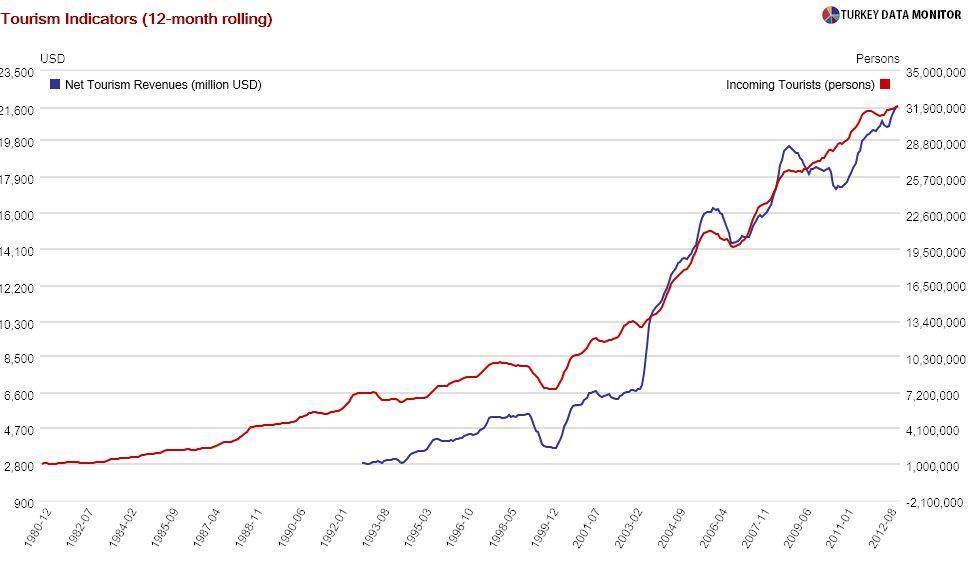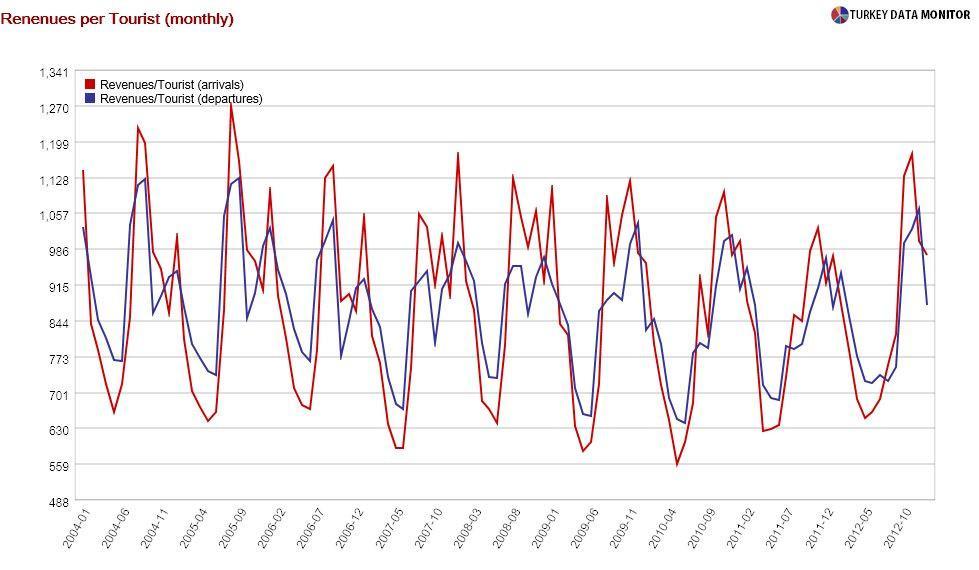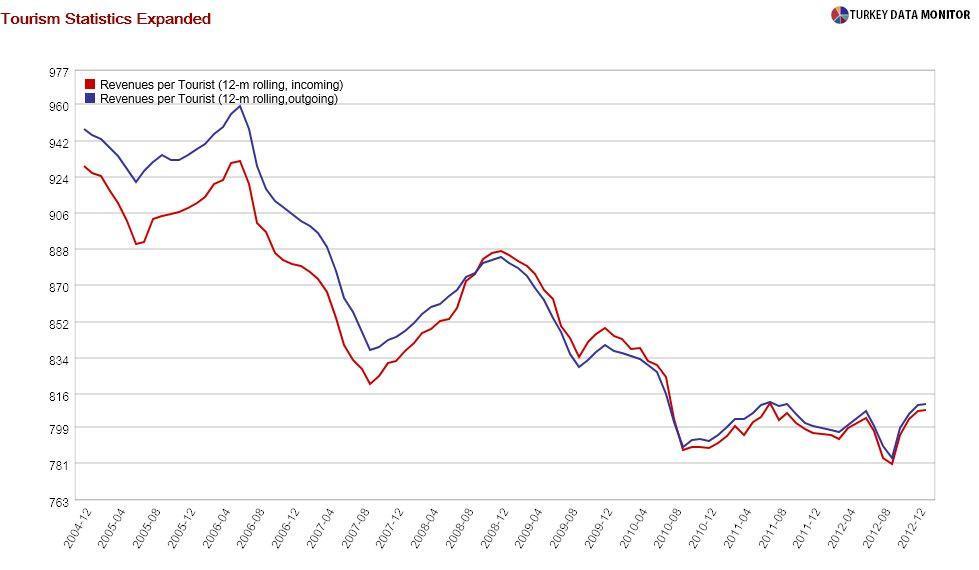Destroying bird sanctuaries makes tourism uncompetitive
 I try to write about Turkish tourism, where I moonlight, once in a while.
I try to write about Turkish tourism, where I moonlight, once in a while.Tourism has been one of Turkey’s fastest-growing sectors. The annual number of foreign visitors has gone up from just over a million at the end of 1980 to almost 32 million in January 2013. Tourism income, which was $22 billion last year, is the main foreign currency revenue item in the balance of payments and therefore makes the country’s current account deficit more manageable.

However, the country has not been able to increase how much it is earning from each visitor. Revenue per tourist has been oscillating between $650 and $1,200 for the past decade, with August-January much higher than the rest of the year. To weed out this seasonality, we can calculate revenue per tourist from annualized data.

That number has been on a downward trend after reaching an all-time high of $960 in June 2006. It has more recently been on the rise after hitting the rock-bottom of $784 in September 2012. There was reason to doubt the statistics, as they were collected via crude surveys at airports. The Turkish Statistical Institute (TÜİK) did indeed revise the tourism figures recently, which increased last year’s revenue by $5.9 billion, but the big picture has not changed. Turkey earns much less from each visitor than other countries.

Why is that? The World Economic Forum’s 2013 Travel and Tourism Competitiveness Report, which was released last week, offers some clues. The biennial report ranks countries using 79 indicators under three areas and 14 pillars. While Turkey’s overall rank is 46th, its performance in the different categories varies a lot.
For example, the report notes that “the country’s main strength continues to lie in its rich cultural resources (19th), with 20 World Heritage cultural sites.” Turkey has also “improved its air transport infrastructure (29th) and its tourism infrastructure (45th),” which supports my observation from Sao Paulo that while Brazil builds airplanes, we are building airports.
However, according to the report, “safety and security issues (79th) remain worrisome, ground transport infrastructure is inadequate (especially railroads and ports), and ICT infrastructure remains unsatisfactory (71st), especially for a rapidly growing tourism destination.”
Turkey’s worst performance is in environmental sustainability, where it ranks a dismal 95th. Anyone who has been visiting our beautiful coasts regularly for the last two decades would confirm this finding. My friend Çağan Şekercioğlu of the University of Utah has been fighting to protect eastern Turkey’s only bird sanctuary from a damn dam. A birdwatcher typically spends $1,500 to $3,400 a year, most of it on travel.
Turkey will continue to attract more and more tourists. It overtook the United Kingdom as the sixth most popular tourism destination last year. But unless it protects its environmental resources, it will continue to be a low-cost destination- no matter how much the state-owned Turkish Airlines spends on glitzy advertising.










